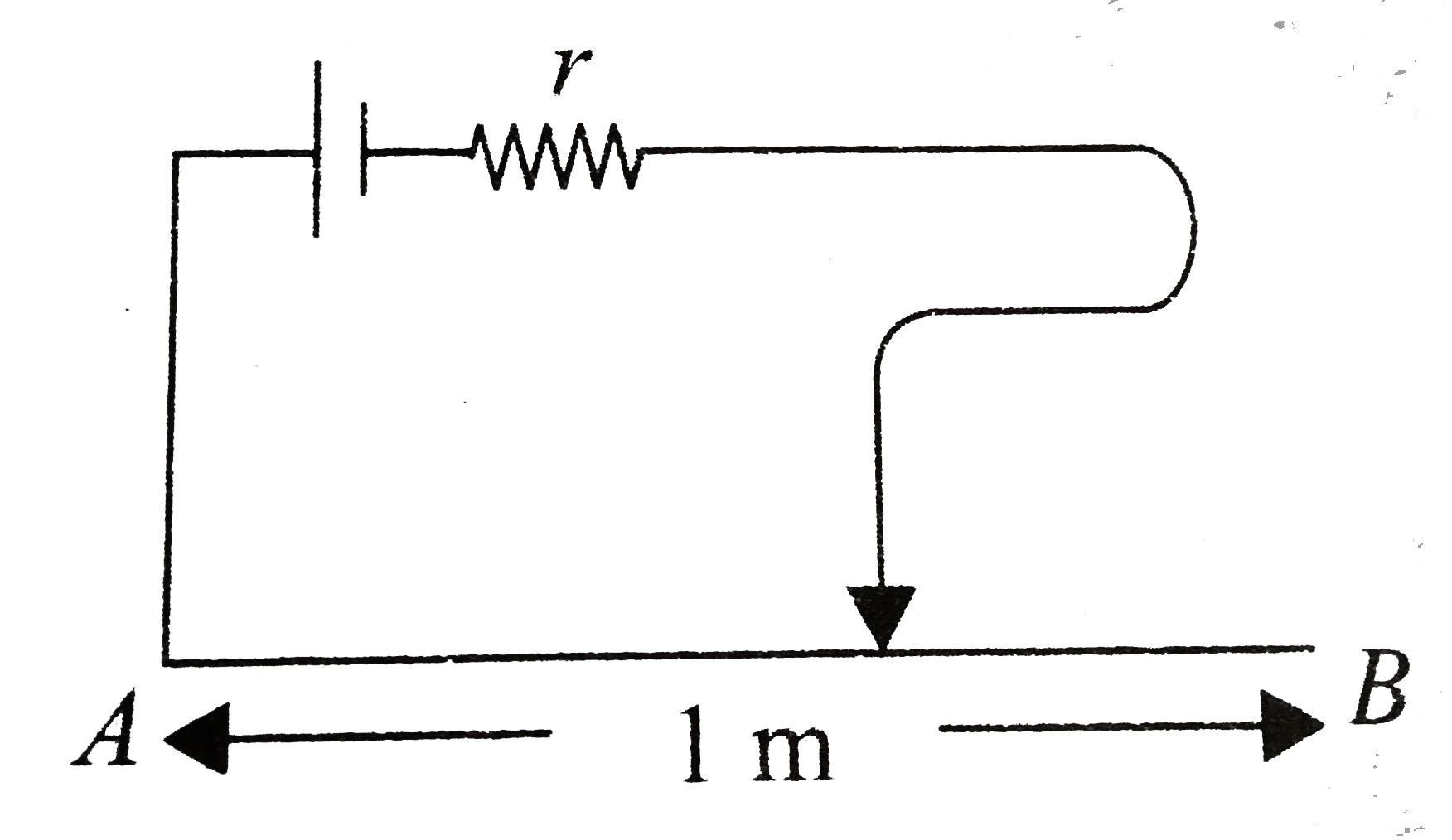A : The potentiometer wire should have uniform cross sectional area.
R : On the pottentiometer wire the jockey is gently tocuhed , not pressed hard.
If both Assertion & Reason are true and the reason is the correct explanation of the assertion , then mark
If both Assertion & Reason are true but the reason is not the correct explanation of the assertion then mark.
If Assertion is ture statement but Reason is false , then mark
If both Assertion and Reason are false statements then mark.
The correct Answer is:B
To solve the question, we need to analyze both the assertion and the reason given and determine their correctness and the relationship between them.
1. Understanding the Assertion:
- The assertion states: "The potentiometer wire should have a uniform cross-sectional area."
- This statement is correct because a uniform cross-sectional area ensures that the resistance per unit length of the wire remains constant. If the cross-section varies, the resistance will also vary, leading to inaccurate measurements when using the potentiometer.
Hint: Consider how resistance is affected by the dimensions of a conductor.
2. Understanding the Reason:
- The reason states: "On the potentiometer wire, the jockey is gently touched, not pressed hard."
- This statement is also correct. The jockey (the contact point used to measure potential difference) should be gently touched to avoid damaging the wire. Pressing hard can create local heating or damage the wire, leading to erroneous readings.
Hint: Think about the physical effects of applying pressure on a delicate wire.
3. Analyzing the Relationship:
- While both the assertion and reason are correct, the reason does not explain why the potentiometer wire should have a uniform cross-sectional area. The assertion is about the necessity of uniformity for accurate measurements, while the reason is about the proper handling of the jockey.
Hint: Reflect on whether the reason logically supports the assertion.
4. Conclusion:
- Since both the assertion and reason are true but the reason does not provide a correct explanation for the assertion, the correct option is that both are true, but the reason is not the correct explanation of the assertion.
Final Answer:
- Both assertion and reason are true, but the reason is not the correct explanation of the assertion.
Correct Option: B
- The assertion states: "The potentiometer wire should have a uniform cross-sectional area."
- This statement is correct because a uniform cross-sectional area ensures that the resistance per unit length of the wire remains constant. If the cross-section varies, the resistance will also vary, leading to inaccurate measurements when using the potentiometer.
- The reason states: "On the potentiometer wire, the jockey is gently touched, not pressed hard."
- This statement is also correct. The jockey (the contact point used to measure potential difference) should be gently touched to avoid damaging the wire. Pressing hard can create local heating or damage the wire, leading to erroneous readings.
- While both the assertion and reason are correct, the reason does not explain why the potentiometer wire should have a uniform cross-sectional area. The assertion is about the necessity of uniformity for accurate measurements, while the reason is about the proper handling of the jockey.
- Since both the assertion and reason are true but the reason does not provide a correct explanation for the assertion, the correct option is that both are true, but the reason is not the correct explanation of the assertion.
- Both assertion and reason are true, but the reason is not the correct explanation of the assertion.
Similar Questions
Knowledge Check
The breaking stress for a wire of unit cross-section is called
Ayield pointBelastic fatigueCtensile strengthDYoung's modulus
Statement I: The wire of a potentioment should be of uniform area of cross section.
Statement II: It satisfies the requirement of the principle of a potentiometer.
View SolutionIf the resistivity of a potentiometer wire be ρ and area of cross-section be A , then what will be potential gradient along the wire
View SolutionA wire of radius R having uniform cross section in which steady current l is flowing. Then
View SolutionA battery of e.m.f. 10 V and internal resistance 2Ω is connected in primary circuit with a uniform potentiometer wire and a rheostat whose resistance is fixed at 998Ω.A battery of unknown e.m.f. is being balanced on this potentiometer wire and balancing length is found to be 50 cm.When area of cross section of potentiometer wire is doubled, then balancing length is found to be 75 cm.
(i)Calculate e.m.f. of the battery.
(ii)Calculate resistivity of potentiometer wire if length of wire is 100 cm and area of cross-section (initially) is 100cm2.
View SolutionThe resistivity of a potentiometer wire is, if the area of cross section of the wire is 4cm2. The current flowing in the circuit is 1A, the potential gradient is 7.5 v/m _______
View SolutionWhen a resistance wire is passed through a die the cross-section area decreases by 1%, the change in resistance of the wire is
View SolutionTwo wires A and B have the same cross section and are made of the same material, but the length of wire A is twice that of B. Then, for a given load
View Solution

